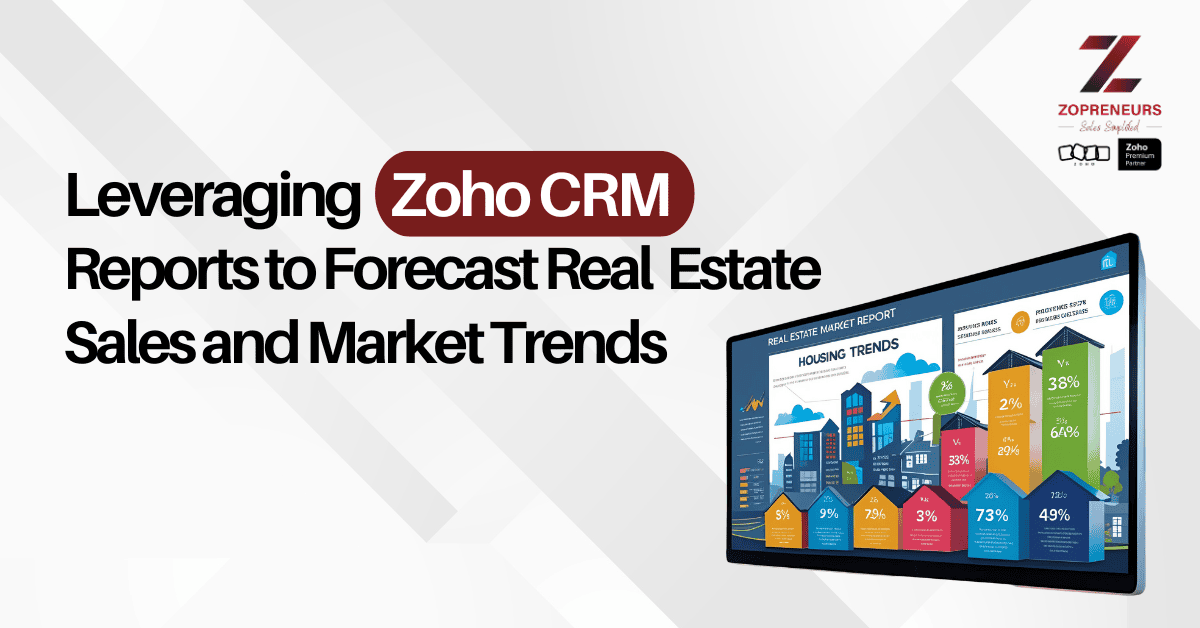
In the fast-moving world of real estate, data isn’t just an asset—it’s your competitive edge. With fluctuating property prices, shifting buyer preferences, and evolving market dynamics, real estate professionals need more than instinct to stay ahead. This is where Zoho CRM reports become a game-changer. They offer deep, actionable insights that help agents and real estate companies forecast sales, track trends, and make smarter business decisions.
Let’s explore how you can leverage Zoho CRM reports to accurately predict real estate sales and stay tuned into market trends.
Why Forecasting Matters in Real Estate
Forecasting allows real estate professionals to:
Anticipate future demand and price movements
Allocate resources efficiently
Set realistic sales targets
Improve client engagement by offering timely, data-driven advice
Without accurate forecasts, you risk making decisions based on outdated assumptions.
How Zoho CRM Helps Real Estate Professionals Forecast Sales
1. Track Lead Sources and Conversion Rates
Zoho CRM allows you to generate reports on lead sources—whether from online listings, social media, property expos, or referrals. By analyzing which sources consistently bring high-converting leads, you can predict where to focus your future marketing and sales efforts.
2. Analyze Sales Cycle Duration
Zoho CRM can report on how long it typically takes to convert a lead into a sale. This helps forecast how quickly you’ll close future deals and identify bottlenecks in your sales process.
3. Segment Data for Targeted Forecasting
With Zoho CRM’s advanced filtering, you can segment your sales data by:
Property type (residential, commercial, rental)
Location
Price range
Agent performance
Segmented reports offer granular forecasts that help tailor strategies for specific market segments.
4. Identify Seasonal Trends
Zoho CRM’s historical reports can help you uncover seasonal patterns. For example, you might discover that property inquiries spike in spring and summer and drop in the winter.
5. Monitor Pipeline Health
A stagnant sales pipeline can stall your revenue growth. Zoho CRM reports highlight where deals are stuck, allowing you to take corrective action.
By consistently tracking the movement of deals through the pipeline, you can forecast cash flow and expected closures with greater accuracy.
6. Custom Dashboards for Real-Time Insights
Zoho CRM allows you to build visual dashboards that consolidate KPIs like:
Total property listings
Active buyers
Average deal size
Forecasted revenue
These real-time dashboards help you make quick, informed decisions and adjust your sales strategies on the fly.
Bonus: Integrate External Market Data
You can further enhance your forecasts by integrating Zoho CRM with external tools that provide real estate market data, such as pricing trends, neighborhood demographics, and mortgage rates. This creates a holistic forecasting system inside your CRM.
Final Thoughts
Forecasting in real estate is no longer just a manual, gut-feeling process. With Zoho CRM’s powerful reporting tools, you can predict sales trends, optimize your pipeline, and stay ahead of market shifts with confidence.
Start leveraging your CRM data today—not just to track what’s happening, but to predict what’s next.
